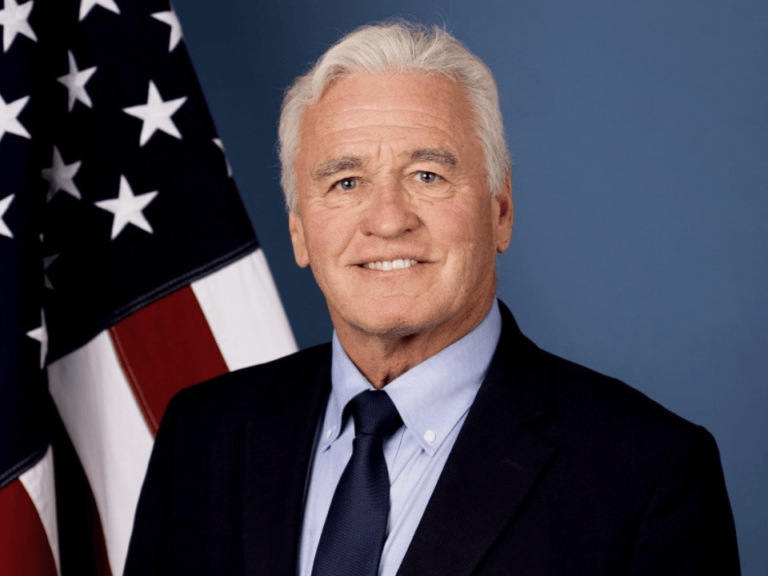The Cancer Letter asked Patrick Loehrer, director of the Indiana University Melvin & Bren Simon Cancer Center, to discuss his institution’s decision to close its 10-year-old proton beam center.
No other institution in the U.S. has closed such a facility.
Loehrer spoke with Matthew Ong, a reporter with The Cancer Letter.
Matthew Ong: Why did Indiana University decide to close the proton beam facility at Bloomington?
Patrick Loehrer: Well, predominantly this was a business decision. We did not think, moving forward, that it would meet the needs of the future of our health care system and cancer center both economically and for research growth.
Are there any lessons, implications or conclusions that other centers and facilities should draw from IU’s decision to close its facility?
PL: This is a very unique situation, because this facility was one of the first four proton facilities in the country, and it was generated as a way to save an aging physics program down in Bloomington. That program was modified to construct a proton beam center, and they did an incredible job of engineering this facility.
But it became obvious that the upkeep and renovation of this would still not make it comparable to some of the more modern proton facilities that are currently being built.
I see from the review committee’s report that a major factor was the sizable investment needed to upgrade the technology. Were there other considerations?
PL: The other factor had to be geographic, by the way. The proton facility is south of Indianapolis, which is where the hub of the IU Simon Cancer Center exists, and where the bulk of our clinical and translational research is housed. Our children’s hospital—the largest facility for the state—is in Indianapolis, and our phase I program is here, so from a translational research component, to have a facility that is an hour away was not ideal. That was a large factor in this decision.
What about scientific factors?
PL: We had a very well-recognized and thoughtful review committee that was led by Ted Lawrence from the University of Michigan, with Steve Hahn from the University of Pennsylvania, and Anthony Zietman from Massachusetts General. In addition there was Dennis Murphy, who is the chief operating officer from IU Health, and myself, serving on the committee.
We were given a number of charges.
First and foremost was to determine whether or not this facility’s model was financially feasible, and whether or not this is something that the health care system needs, going forward. We also assessed the status of proton therapy, and whether or not it is critical to the mission of the IU Simon Cancer Center and IU Health.
The scientific value of proton therapy certainly was discussed in general, and I think it has major implications in cancer care, but it was not the principal component of this decision. This particular discussion will factor into further discussions about whether or not IU Health will invest in proton facilities in Indianapolis at the IU Simon Cancer Center.
Can you discuss those scientific implications as well?
PL: This has been well outlined. In fact, there was a recent issue in the Journal of Clinical Oncology in which Anthony Zietman was a co-author on a paper, and I thought he did an excellent job with this. There was also a very thoughtful analysis of this which also contained a number of quotes from Anthony in a recent issue of Discover Magazine.
When one compares proton therapy to historical data on photon therapy, it’s clear that proton therapy comes way ahead. However, there’s been evolution in how photon therapy is now delivered including stereotactic radiotherapy and IMRT. These modalities come much closer to the advantages from normal tissue damage seen with proton therapy at the present time.
The other concern is that randomized trials comparing photon vs. proton have not been completed. There have been a couple trials that have been initiated, and I do look forward to the completion of those trials. I will be particularly interested in potential long-term side effects of protons, and assurances that there are no other side effects that we believe many develop.
What was IU’s process in approaching this problem? How was the review committee formed, and how were the members, including you, chosen?
PL: This was under the charge of the dean of the IU School of Medicine, Jay Hess, who selected the members. I was not part of the process of how he selected each of us, but he did bring two members from institutions that already have proton facilities (Hahn and Zietman). Ted Lawrence was past president of ASTRO, and a very well thought of radiation oncologist who also has a background in medical oncology. Also, Jay knows him from his time at the University of Michigan.
And, obviously me, because I’m the director of the Simon Cancer Center, and Dennis Murphy was a logical choice because IU Health has a lot of skin in the game for this facility.
You were saying that the facility was built in Bloomington in the first place, as opposed to in Indianapolis, because of the physics department?
PL: The Indiana University had a very strong physics department—and still does—and this was, as funding for that cyclotron was declining, it was a thought process that perhaps this could be converted to therapeutic value, and so this was converted back a decade ago now, in 2004.
This was initially an investment of Indiana University-Bloomington, which established a freestanding clinic. Eventually, IU Health became an investor in the Proton Therapy Center and then became part of the IU Health system. But behind it, there still was—if you will—debt that was accrued for the renovations of the buildings and clinical facilities in this somewhat isolated Bloomington facility.
Is IU the first to close a proton beam center in the U.S.? Do you know who is next?
PL: I’m not aware of anyone else closing a proton facility, so we probably are the first one to do this.
What’s it like to be the first cancer center director to shut down a proton beam facility in the U.S.?
PL: I enjoy my job. But this was a very difficult decision, and not just for the closure of the facility, but because there are incredible staff that are working down in Bloomington that have spent a decade serving patients and working to keep this facility going.
That is extremely difficult, and in many ways, heartbreaking to do this for our staff and faculty, but economically this is a tough decision, and particularly, when we think about value-based therapy in these tough economic times, we had to make a hard decision, and this decision was made.
What kind of patients was the Bloomington facility treating?
PL: There were a number of pediatric tumors that came down there. Probably a third of head and neck patients, particularly with base of skull tumors. Brain tumors represented about a third of the patients that were there. Prostate cancer, which I know is common to many different centers, was about 18 percent.
So in the broader economic view of this issue, the committee report also says that there is a growing “proton bubble.” Is there? Does capacity exceed need?
PL: I do personally have some concerns about whether or not proton facilities are being built for, in many ways, marketing advantages. I would also have concerns that there is not much need assessment done for the country in terms of facilities. How many do we need, and where should they be located to best serve our patients?
I do think in times of economic crisis right now, it is up to us to make some very tough decisions about how we expend our health care dollars. And I think this is one decision that we made here. I think other health care systems would benefit from making similar thoughtful analysis of high expenditure items.
In view of all that, and since IU says the Bloomington facility has been losing money for most of its existence, are proton beam therapy centers economically viable in most places? Can people make money off these things, as far as we can see?
PL: Well, our advisors in Boston and Philadelphia tell us that they are making money on their proton facilities; at least this is how they explained it to us. But there is a carry-over effect. They get more referrals for consideration of proton therapy, and many of them go on to receive radiation therapy via the conventional route, or through stereotactic radiotherapy.
So by having this facility, many times it attracts patients there, so they believe that it is useful that way. And I believe that many other centers are setting it up that way.
I believe, as time goes on, there is a real concern whether or not the reimbursement for proton therapy is sustainable. Some of the profits that are currently seen may not be as strong down the road.
So one needs to thoughtfully think about an investment of $20 to $30 million, whether or not you can justify that for your health care system, but, more importantly, how this expense is spread across the patients.
Advocates say that emerging data and further research appear to show greater and broader application for the use of proton therapy in other types of tumors. Is that promise worth investing in again for IU at any point in the future?
PL: I strongly believe that we are going to readdress this issue at IU, and I think for us, if we do invest in a proton facility, it will be closer to our main base of operations and our pediatric hospital. I believe we would also focus on how to better define the optimal populations for proton therapy and novel combined modality approaches such as chemo-radiotherapy through our phase I program with photon therapy, as well as looking at the impact upon survivorship issues.
The greatest apparent benefit for proton therapy appears to be in the pediatric population, and because we have such a strong pediatric cancer research program here, we will have to think about this very strongly in terms of its potential usefulness.
But we are not in favor of doing it just to keep up with another health care system.
Is it true that the only clinically meaningful advantage, thus far, of proton beam therapy is limited to pediatrics, and for treatment of eye and skull base tumors?
PL: Ideally, you’d want to minimize toxicity to any normal tissue in the body when you give radiation, and proton therapy, as how it’s designed and theoretically working, should do that. But in particularly sensitive parts of the body, the anatomy would really preclude us from wanting to radiate very sensitive areas.
In other areas of the body, the body will be a bit more forgiving. And so a wider area—in the liver, for example—the liver can compensate for that. A wider area that would include the spinal cord, or the medulla oblongata is not going to be as tolerant to this.
So I think there are particular areas of very high impact for protons, and there are other areas that I think the differences between conventional therapy and proton therapy are going to be minimized.
Would this be a right time to sell you a carbon ion gizmo?
PL: Yeah, no comment.
Is there anything we’ve missed?
PL: The last thing I’d like to say is that we take no great joy in closing down any facilities. I think this was a thoughtful process, and I have great pride in the staff and the faculty who have been involved with this facility over the past decade.
We have done some very unique research down there, but I think as we move forward, all our therapeutic modalities, whatever they are, I do think we need to do this kind of very careful analysis of the benefit and value for the patients and for the health care system.












